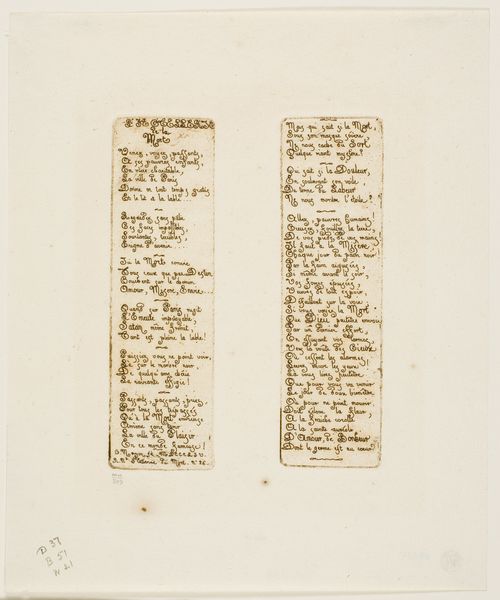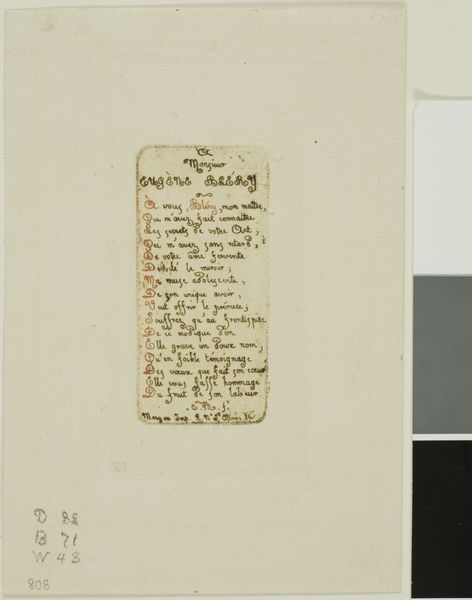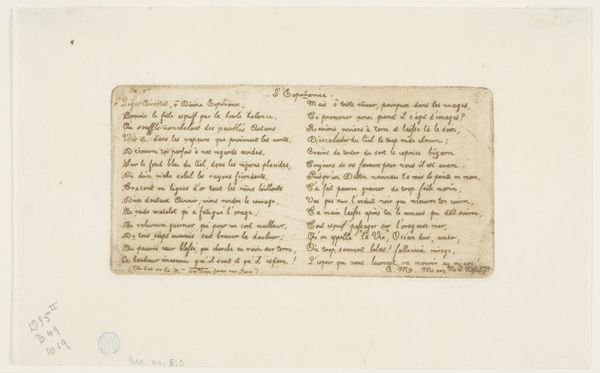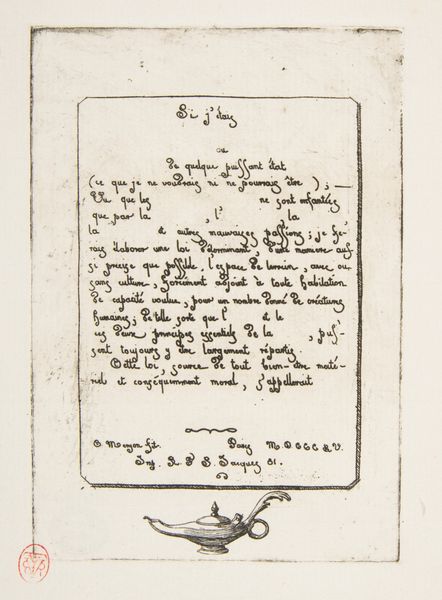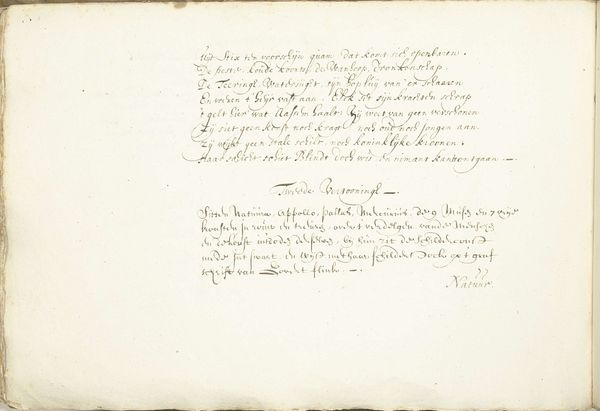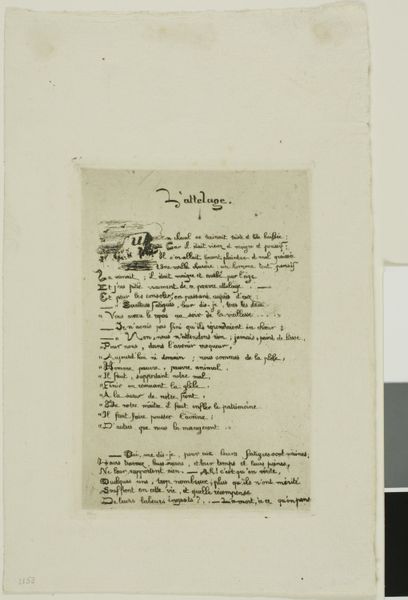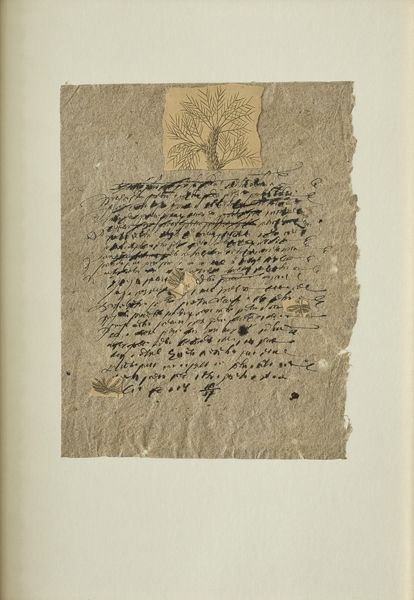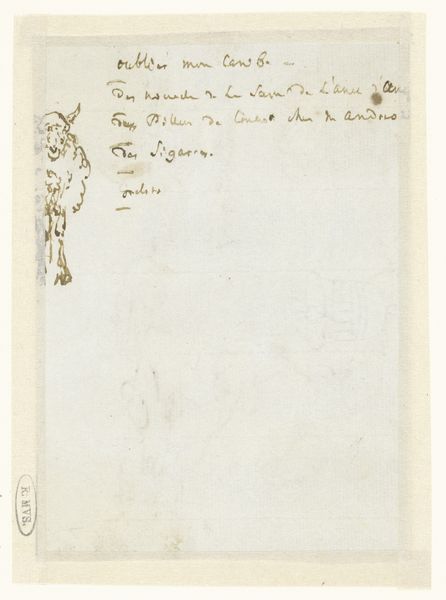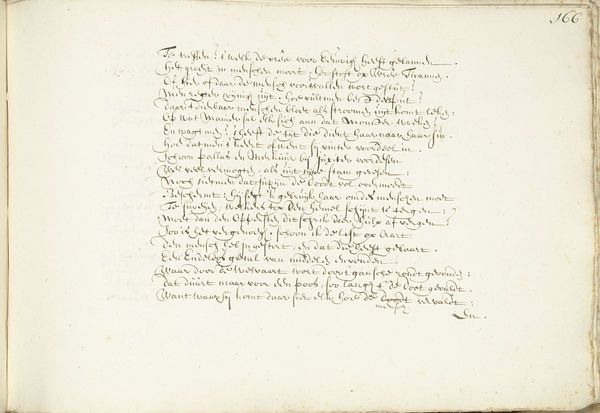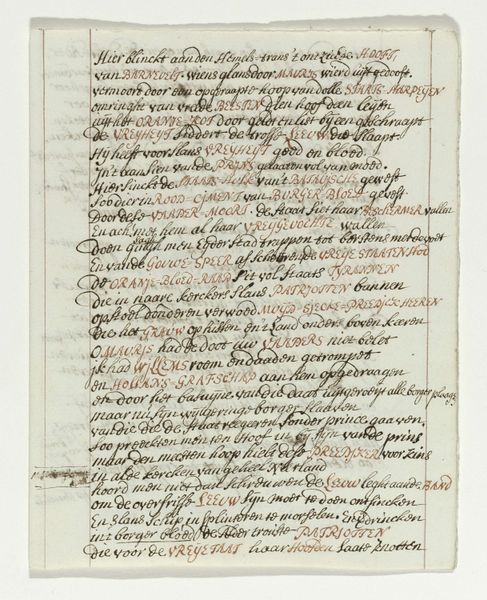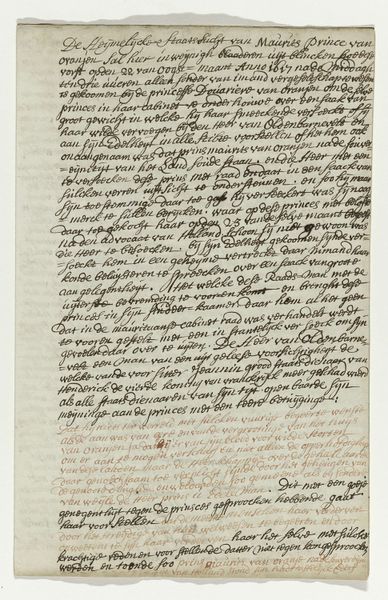
Dimensions: 70 × 36 mm (image); 70 × 36 mm (plate); 111 × 75 mm (sheet)
Copyright: Public Domain
Curator: Oh, isn’t this intriguing! Take a moment with Charles Meryon’s etching from 1854, “Let the pure soul groan…” Currently held at The Art Institute of Chicago. It’s, well, it's basically a handwritten text, isn't it? Editor: Immediately, it feels incredibly claustrophobic. It’s monochrome, primarily text…like peering into someone’s frantic, perhaps unstable mind. Curator: Meryon was known for his depictions of a rapidly changing Paris, his fascination with its architecture, and the way those very stones seemed to embody human emotions. Here, he moves inward and offers words... seemingly a fragment of poetry. Editor: Paris as an emotional landscape— I'm so interested in this framing of architecture as emotional scaffolding. But also, let’s consider the date: 1854. Urban renewal, displacement, Haussmann's plan was fundamentally reshaping lives and social fabrics. "Let the pure soul groan…" becomes less about personal anguish and more about communal despair. The choice to use handwriting connects to an embodied presence too: who’s voice is this? Curator: I always felt his choices reflected his internal landscape... particularly as his mental health deteriorated. I mean look how cramped those letters are, practically tripping over one another, it does create a certain unease. You've noticed the dark language— references to demons and diabolical forces intertwined with this description of "our good city." Meryon is suggesting this corruption runs deep within even familiar settings. Editor: Or is it the city itself which corrupts? Notice also, that it could easily read like some incantation, some forbidden script. The role of the written word itself is so powerful. Is Meryon acting as chronicler, a visionary, or an exorcist here, wrestling with the spirits of urban life? It calls on very relevant modern concepts such as “gentrification” and the cleansing of community. Curator: Ultimately, I'm left with a sense of human vulnerability against the backdrop of forces much larger than ourselves, urban and personal both. Editor: Indeed, and how our environments, our very built environments, continue to haunt us, demanding we grapple with the legacies they embody. It's a fitting prompt for further reflection.
Comments
No comments
Be the first to comment and join the conversation on the ultimate creative platform.
